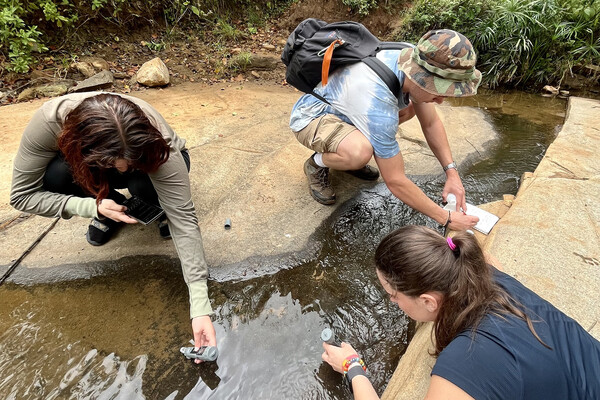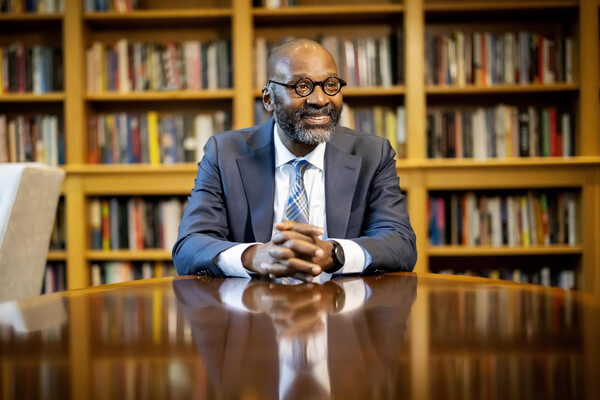
Griffin Pitt, right, works with two other student researchers to test the conductivity, total dissolved solids, salinity, and temperature of water below a sand dam in Kenya.
(Image: Courtesy of Griffin Pitt)
A team of surgeons from the Perelman School of Medicine are the first in the world to use a surgical robot to assist with a bilateral free flap breast reconstruction—a procedure in which tissue is taken from the lower abdomen—similar to a “tummy tuck”—and used to rebuild the breast. The robot allows surgeons to make a much smaller incision into the abdominal wall muscles, allowing patients to recover and be discharged more quickly, without the use of addictive narcotic painkillers.
Suhail Kanchwala, an associate professor of plastic surgery, led the team that performed the procedure, which took place at Pennsylvania Hospital earlier this month. Kanchwala partnered with Ian Soriano, a clinical assistant professor of surgery, who specializes in minimally invasive procedures, to develop the technique.
“We’ve been using a minimally-invasive, laparoscopic technique to reduce pain and get patients home more quickly without using narcotics for more than a year. The addition of the surgical robot allows for greater precision and is the next step in our evolution,” Kanchwala says.
Women who have chosen a mastectomy, either to remove cancerous breast tissue or as preventative measure due to genetic risk, have several options for reconstruction. Traditionally, using a patients’ own tissue results in a more natural appearance and is a more permanent solution when compared to implant-based reconstructions, which often require additional surgeries.
“Our experience is what allows us to innovate, and adapting minimally invasive approaches to breast reconstruction allows patients to have the same recovery of implant reconstruction without the downsides of having an implant, such as the risk of infection or the need for further surgery,” says Kanchwala.
Read more at Penn Medicine News.
Penn Today Staff

Griffin Pitt, right, works with two other student researchers to test the conductivity, total dissolved solids, salinity, and temperature of water below a sand dam in Kenya.
(Image: Courtesy of Griffin Pitt)

Image: Andriy Onufriyenko via Getty Images

nocred

Provost John L. Jackson Jr.
nocred